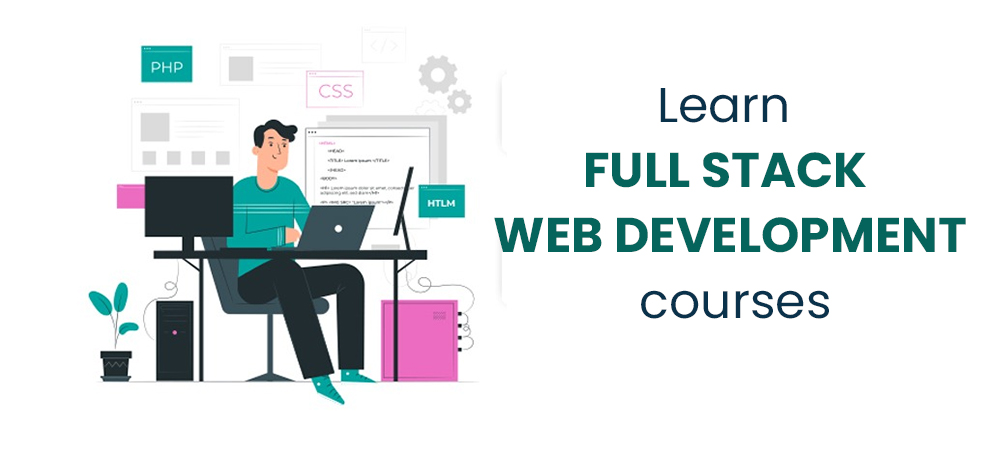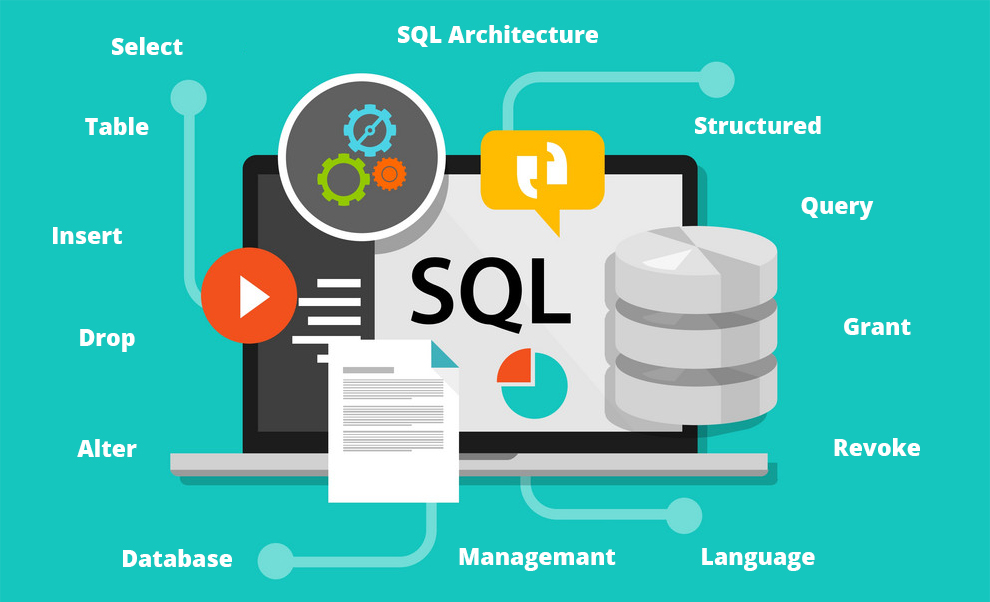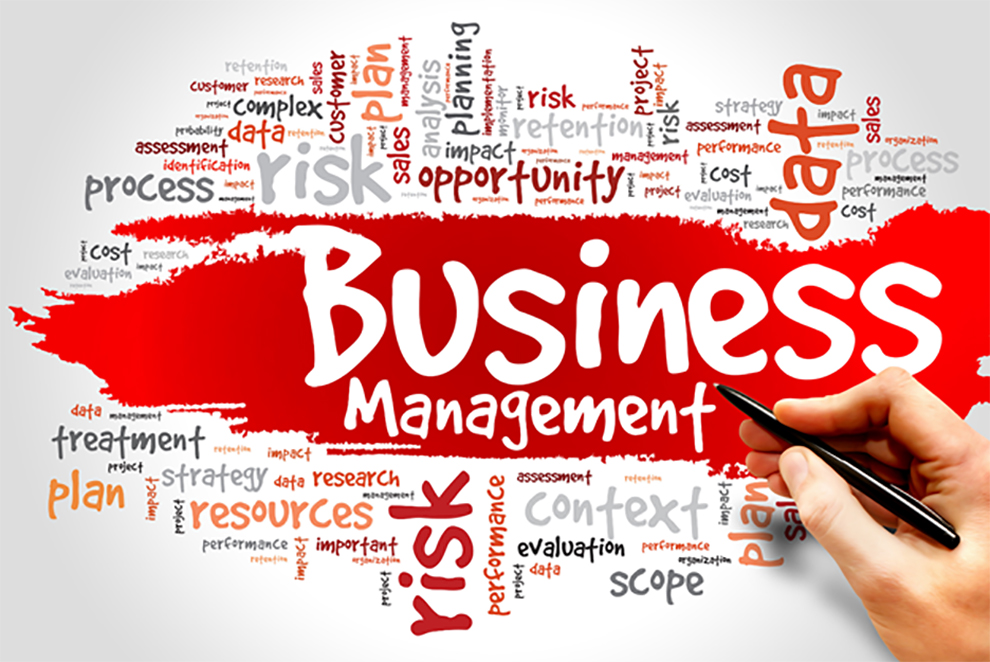A Brief Introduction To Full-Stack Development
Full-stack development entails the front-end as well as back-end development of a website. This means that in full-stack development one has to make sure a website looks aesthetically pleasing and is responsive and functional too.
Full-stack development is an exclusive and extremely lucrative skill to have because the demand for full-stack developers is exponentially increasing with more startups, apps, and businesses springing up. After all, every organization needs a fully functioning website.
There are various kinds of Full-stack development tracks like MEAN stack, MERN stack, and so on.
Jump To
- What Does A Full-Stack Developer Do?
- Skills You Need To Be A Full-Stack Developer
- Full-Stack Web Development Guide
- Why Become A Full Stack Developer?
- How To Crack A Full Stack Developer Interview?
- Bonus Resume Preparation Tips
- Frequently Asked Questions
- Conclusion
In this article, you shall get to know all about the different kinds of full-stack development tracks and learn how to become a self-taught full-stack developer.
We shall also provide some helpful tips to learn full-stack development effectively in order to become a professional full-stack developer.
Continue reading this article to find out about the best way to learn full-stack web development.
What Does A Full-Stack Developer Do?
Prior to figuring out how to learn full-stack web development, one must be aware of the duties of a full-stack web developer.
A full-stack developer essentially works on both front and back end. The front-end of the website includes providing a color scheme, placing the necessary elements accurately, adding media and pictures, adding the desired font, checking the size and placements of elements, and so on.
Whereas developing the back-end of the website includes database management, data analytics, frameworks, APIs, etc.
Front-end development is also known as client-side development and back-end development is known as server-side development.
There are various technology sets through which you can implement full-stack development like MERN Stack (Mongo-DB, Express, React, and Node), MEAN Stack (Mongo-DB, Express, Angular, and Node), LAMP Stack (Linux, Apache, MySQL, PHP/Perl/Python) and so on.
Learning any one skillset completely can make you a professional full-stack developer.
Skills You Need To Be A Full-Stack Developer
In order to be a full-stack developer, a programmer needs to have extended knowledge of a variety of domains (both back end and front end).
The best way to learn full-stack web development is to first accustom yourself to the following terms.
The technologies you need to be well-versed with for front-end development are:
- HTML (HyperText Markup Language)
- CSS (Cascading Style Sheets)
- Javascript/ jQuery or PHP.
- Responsive designs like Bootstrap
- Frameworks like React.JS
- GitHub
The technologies you need to be well-versed with for back-end development are:
- Database management and querying (Example: MongoDB or MySQL)
- Hosting server on Node.js or Apache.
The Full-Stack Web Development Guide
If you are wondering how to become a self-taught full-stack developer then these are steps you need to adhere to:
1. Assessing your existing knowledge: It is important to know where you stand. If you have previous experience with Full Stack, Front or Back-End Development, or any other programming languages, then you should begin learning from an intermediate level.
If you have no experience, then opt for beginner-level tutorials. If you are an experienced Full-Stack Developer, who is learning it just to keep up with the latest features then you should start learning from advanced resources.
2. Setting up a realistic goal with a deadline: You should set up practical goals and put yourself on a deadline depending on how much time you can invest in mastering this niche.
For example, if you are a student, you probably have a lot of time to learn full-stack development from scratch. In that case, you should set up realistic goals and carve out time for studies along with freelancing gigs and part-time work.
This will give you experience and more exposure before you enter the strict corporate world.
3. Understanding the basic tools, terminology: One needs to understand the terms related to full-stack development if one is to work in the domain of full-stack development. Some of the most common terms are as follows:
- HTML 5
- CSS
- JavaScript
- Frameworks- React.JS, Angular
- Python and PHP
- Rest APIs and HTTP
- UI and UX
- Version Control System
- GitHub
- Database Management
- Deployment and DevOps
The best way to learn full-stack web development is to be sure to read up on these terms and understand their meanings completely.
4. Learning the needed language: Once you are familiar with the terms and their meanings, you need to begin learning the required languages of the full stack you prefer.
For instance, if you are to become a MERN stack developer, you need to learn HTML, CSS and JavaScript followed by React.JS, Node.js, and MongoDB.
All of these require the basic knowledge of coding and therefore learning the concepts of OOP (Object Oriented Programming) will be a good place to start.
You then need to shift your focus towards the syntax of the languages and implementing logic in your codes comes later. Languages like HTML and CSS are purely syntax-based and you need to remember a great deal in these languages.
However, languages like Python or JavaScript are more conceptual with limited syntax to remember. Choose the tech stack that suits you best and start learning basic programming in those tech stacks.
5. Online tutorials: To know how to learn full-stack web development, you can hop on to a website or go to YouTube to watch small tutorials that define Full-Stack development properly and comprehensively explain its functions and applications.
These tutorials also explain some of the theoretical terms in detail and are not time-consuming or difficult to understand. They have been made for newbies to develop an understanding of the features of Full Stack Development.
One can familiarize themselves with the development environment of their choice through these video tutorials.
6. Full stack development books: One of the primary steps you can take while figuring out how to learn full-stack web development is to read up about it.
You can purchase a good beginner-level full stack textbook that helps you understand the fundamentals of Full stack development and builds a solid understanding of the logic and theory behind the tech stack.
Books are a beneficial purchase because not only do they teach you the topics in great detail but you can also refer to them in the future for a quick revision in case you forget some of the concepts.
You can also choose to read about various types of Full Stacks from articles that are available on the internet for free.
7. Online courses: The next step in this full-stack web development guide is opting for an online full stack course from any Ed-Tech platform like Udemy, Udacity, Coursera, edX, etc. to know about full-stack development in-depth.
These courses tend to test your knowledge along the way. These courses can be free or paid for. Pick a course that is highly rated and has a renowned instructor.
Make sure you complete the course and all the quizzes and small projects that are assigned to you within the course.
If you enroll yourself in a course, you will develop a solid foundation for Full-Stack development and all the programming languages related to it. It is the best way to learn full-stack web development for beginners.
8. Practice and build a portfolio: When you begin learning a particular skill it is crucial to get some practical experience. After making sure you have developed strong basics of full-stack development, the best method to learn it fully is to create your own full-stack project.
Start with a small project like creating an unresponsive website. Once done with the mini-project you can consider moving on to more complex and responsive websites or payment gateways.
This will give you practical hands-on experience and you will also get accustomed to developing projects from scratch.
9. Be a part of the programming community: There are several coding platforms online like Leetcode, CodeChef, Geeks for Geeks where you can solve coding problems related to full-stack development daily, take part in hackathons and quizzes and even take tutorials to learn the coding languages used in Full Stack development.
These sites provide coders with ratings depending on the number of codes they solve and submit. The higher the coder’s rating, the greater are their chances of getting recognized by recruiters who often scour these platforms in search of exceptional talent. It acts as one of the best ways to learn Full Stack development.
There are several open-source platforms and student communities for Full stack development where you can post your queries, interact with professionals and even get inspired by projects that others are making.
You might learn about a new topic from a complete stranger as well as teach something new to another stranger. Networking has always been one of the best ways to learn Full Stack development online.
10. Learn and evolve: Last and most important – stay on top of things! Learn new technologies and keep using them.
Why Become A Full Stack Developer?
If you are someone who is into technology and development, then you must explore full-stack development.
It exposes you to a variety of skills that will be extremely beneficial for you in the years to come even if you want to switch from full-stack to other technologies like data science, front-end development, back-end development, database management and much more.
The best thing about full-stack development is that, in order to become a full-stack developer, one must learn several technologies like Python, PHP or JavaScript, SQL or NoSQL database management, HTML, CSS, Frameworks like React, and server-side operations in Node.js or Apache. These technologies are useful individually too.
You can land almost any technical job if you know how to learn full-stack web development technologies well enough. For example, learning full-stack teaches you front-end and back-end development which are both lucrative tech stacks individually.
Learning Python assists in landing a Data Science job and Database management is crucial for all technical job roles.
Full-stack developers also get paid extremely well as compared to other technical job profiles and it is overly simple to switch from full-stack development to any other technology.
How To Crack A Full Stack Developer Interview?
A few things to keep in mind while appearing for a full-stack development interview:
- You have to know your theory well. Theoretical questions form the bulk of any full-stack development interview.
- Have your full-stack projects in order and your Github repositories organized. Good and tidy projects along with a strong Github profile can take you a long way in an interview.
- Do not stop practicing DSA (Data structures and algorithms). Many companies hire for development roles through the knowledge of DSA alone and others make sure you know how to code even if they are directly hiring for a full-stack role.
- You need to be confident in your answers and if you don’t know something, show the interviewer that you are enthusiastic to learn.
- Be well-versed with the HR round questions too apart from the technical questions. You wouldn’t want to be rejected solely based on not being underconfident despite having the technical know-how.
Bonus Resume Preparation Tips
In order to have a stellar resume, you must take note of the following things:
- Do not make your resume lengthy. If you are fresher your resume should be one-page maximum. If you are someone who has been in the industry for quite some time, you can take one and a half or a maximum of two pages for your resume. No one from the talent acquisition team has time to read pages of resumes.
- Avoid mentioning skills, projects, and experiences that are not relevant to the domain you are applying for, in this case – full-stack development. You want your resume to make an impression that you are focused on a single domain.
- Do not make spelling or grammatical errors even if you are applying for a technical role.
- Attach a stellar cover letter that will show that you are knowledgeable and enthusiastic to learn more.
Frequently Asked Questions
Q: Can I learn full-stack Web development for free?
Ans: You can learn full-stack development for free through YouTube videos or tutorials available on several websites. However, opting for a paid course is highly advisable because paid courses are taught by professionals who have a lot of experience in their particular domains.
Paid courses also provide valuable certifications, assist you in making projects and give you an in-depth knowledge of full-stack development. Refer full-stack web development guide given above to know about the best way to learn full-stack web development.
Q: Which full-stack is in demand?
Ans: All full-stack technology sets are in great demand but the LAMP stack involving technologies like Linux, Apache, MySQL, and Python is the most sought-after tech stack when it comes to full-stack web development. Other popular tech stacks include MERN Stack and MEAN Stack development.
Q: What is the salary of a full stack developer in India and the US?
Ans: The average salary of a full-stack developer in India is around 6.5 LPA (Lakhs per annum) but it can vary from 3 LPA to 20LPA (or even more) depending on your experience, competency, and skillset. In the United States, the average salary of a full-stack developer is $100,000.
Q: Can I become a full stack developer in 6 months?
Ans: The brief answer would be “No”. Someone can’t become a full-stack developer in 6 months. There are a lot of technologies to be learned in full-stack development and 6 months would merely scratch the surface.
Practicing full-stack development dedicatedly for 6 months can make you well-versed with all the technologies but not a professional developer.
You need to follow the full-stack web development guide given in this article, have good projects on your resume, and at least a year of practice to be able to become an advanced-level full stack web developer.
Q: How long does it take to become a full-stack developer with no experience?
Ans: If you have no experience, it implies that you have to learn the programming languages, concepts and theories from scratch and that can take quite a while if you wish to be thorough in your knowledge.
You can get certified within 6 months but learning in-depth about full-stack development can take around 1 or 2 years depending on your learning abilities and dedication level.
With the help of the guide provided in this article, one can learn full-stack development considerably faster than any other method.
Conclusion
This article has provided you with all the necessary details that you will find useful while figuring out how to become a self-taught full-stack developer. The full-stack web development guide has been provided in the paragraphs above most comprehensively.
We hope this article helps you in your journey of exploring Full Stack development and helps you to answer the question ‘how to learn full-stack web development?’ correctly and concisely.




